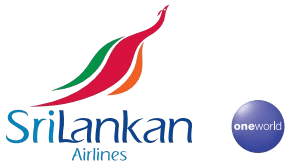Revenue management isn’t one-size-fits-all. The same platform that transforms a hub-and-spoke carrier’s connecting traffic decisions can revolutionize how a leisure airline manages its point-to-point network. The key? Configuration that aligns with your airline’s business and revenue strategy, and unique market dynamics.

One Platform. Three Models. Three Success Stories.
In this blog post, we explore how three different airlines unlocked the full value of the PROS Revenue Management platform, each taking a different path, shaped by their business model and goals:
SriLankan Airlines migrated from segment-based to Origin & Destination (O&D) setup to better capture connecting traffic revenue.
Saudia is shifting from legacy leg-based operations to global O&D modeling in support of the Kingdom’s Vision 2030 transformation.
Air Transat remained leg-based and is growing its connection but enhanced their setup with PROS Elasticity Forecasting and Optimization integration to suit their unique vacation-package dynamics.
Each journey reinforces a simple truth: the right RM configuration can unlock significant revenue potential, but success depends on understanding your airline’s specific needs, market dynamics, and operational realities.
Why RM System Configuration Drives Revenue Performance
No two airlines operate alike, so why should their revenue management systems look the same?
Modern revenue management platforms offer flexible configuration options, because airline business models vary dramatically. The key is matching system capabilities to your operational strategy and market position.
O&D Logic: Essential for Hub-and-Spoke Networks
For airlines with significant connecting traffic, switching from leg-based to origin-and-destination (O&D) logic is a game changer, which, according to industry research, can lead to 1-2% incremental revenue gain.
 |
Kshanaka Saparamadu
Head of Revenue Management, Network & Alliance  |
This shift from segment-based thinking to O&D optimization enables airlines to account for the full value of a passenger’s journey. This is crucial when competing itineraries share flight segments, but differ in total distance, price elasticity, and strategic value.
Price Elasticity: Capturing Price Sensitivity Nuances
Air Transat’s experience demonstrates how advanced pricing models can address unique market challenges. While staying leg-based, they implemented Elasticity Forecasting and Optimization technology to better handle their vacation package business and distinctive booking curve.
 |
Aimé Kuiteing
Senior Director, Revenue Management Systems  |
AI and Machine Learning: Freeing Analysts for Strategic Work
Artificial intelligence and machine learning aren’t just buzzwords, they’re transforming how RM teams work.
 |
Kshanaka Saparamadu
Head of Revenue Management, Network & Alliance  |
By automating tactical tasks like forecast tuning and optimization, modern RM tools give teams the bandwidth to drive long-term revenue strategy and better business outcomes.
Implementation Challenges: Common Patterns and Solutions
Despite unique configurations, these airlines faced similar implementation hurdles, but found effective solutions to drive RM success.
Data Migration and Historical Information Gaps
Transitioning from legacy systems to O&D logic surfaced a common problem: insufficient historical data in the right format.
 |
Kshanaka Saparamadu
Head of Revenue Management, Network & Alliance  |
To bridge the gap, SriLankan combined partial data migration with analyst-driven decision-making in the early months, allowing the RM system to recalibrate over time.
Cultural and Process Transformation
Technology implementation succeeds or fails based on user adoption. RM analysts need to be trained on the system, understand how it works to deliver the desired outcome, and build the trust that it is their best decision-support.
 |
Prabh Sharan Singh
former Director of RM & Pricing COE  |
Similar to Saudia, SriLankan Airlines addressed this through comprehensive stakeholder education and ongoing support.
 |
Kshanaka Saparamadu
Head of Revenue Management, Network & Alliance  |
Managing Expectations and Intervention Quality
Airlines must balance system automation with analyst expertise. Air Transat’s approach focuses on intervention quality rather than quantity.
 |
Aimé Kuiteing
Senior Director, Revenue Management Systems  |
This shift reframed analysts not as system babysitters, but as strategic partners in optimization that enable better results faster.
Advanced Forecasting Techniques That Deliver Results
Each airline leveraged different forecasting capabilities based on their market conditions and operational needs, but all aimed to improve accuracy, responsiveness, and revenue optimization.
As a result of these innovations, the airlines have increased their revenue and improved customer satisfaction. By using advanced forecasting techniques, they can offer competitive pricing while also optimizing seat availability.
Granular Forecasting for Diverse Traffic Types
The same route can serve multiple passenger types with different booking behaviors and budget constraints. SriLankan Airlines uses PROS RM to forecast demand across different passenger segments, and based on that optimize pricing for each market segment, resulting in increased revenue and load factors.
By utilizing different forecasting capabilities based on their specific market conditions and operational needs, airlines can better prepare for potential disruptions. This is especially important in today’s volatile markets, where unforeseen events can greatly impact the industry and lead to demand shifts.
One such tool that has proven effective for SriLankan Airlines is simulation-based forecasting. By using a simulation model, the airline can run various scenarios and analyze potential outcomes to make informed decisions. This allows them to be proactive, not reactive, when it comes to adjusting prices and managing inventory.
 |
Kshanaka Saparamadu
Head of Revenue Management, Network & Alliance  |
In-House Model Integration
Air Transat supplements platform capabilities by integrating in-house machine learning models with PROS Forecasting and Optimization. This hybrid approach improves the precision of demand predictions, identifies emerging booking patterns, and allows for fast model updates as conditions shift, especially important for their seasonal and leisure-focused network.
Saudia’s Roadmap for Enhanced Forecasting Accuracy
To improve network-level forecasting accuracy and effectively manage their significant portion of double-digit group traffic, Saudia is implementing integration with PROS Group Sales Optimizer.
By further incorporating group volumes into the RM forecasting and optimization process, the airline aims to bring more consistency, control, and accuracy to large booking scenarios that impact network-wide planning and pricing.
 |
Prabh Sharan Singh
former Director of RM & Pricing COE  |
Why PROS: A Platform Built for Airline Complexity
Proven Expertise in System Integration
PROS has a long track record in managing complex system transitions, ensuring seamless integration with different reservation systems to support a wide range of airline models and market needs. Its approach accommodates diverse operational demands, providing a reliable foundation for system upgrades.
Tailored Stakeholder Support
With specialized in-house expertise, PROS provides customized education and training like RM certification and masterclasses. These initiatives are designed to reduce implementation challenges, enhance user adoption, and ensure a smooth transition to the platform.
Advanced Forecasting for Volatility Management
The PROS Platform employs sophisticated, multi-layered forecasting techniques that learn from demand shifts. These tools enable airlines to navigate market volatility with confidence, supporting scalable operations and strategic decision-making.
Recognized for Trust and Innovation
Airlines trust PROS for its robust technology stack grounded in rigorous scientific methodologies. This foundation supports sustainable performance and fosters long-term innovation.
Maximizing Your RM Platform Investment
The experiences of SriLankan Airlines, Saudia, and Air Transat demonstrate that successful RM platform implementation doesn’t succeed on technology alone, it requires alignment between system configuration and business strategy, and a trusted partner. Whether you’re operating hub-and-spoke networks with significant connecting traffic, transforming your operational model to serve new markets, or optimizing unique leisure and package businesses, the right platform configuration can drive measurable revenue improvements.
The key lies in understanding your specific operational needs, market characteristics, and organizational capabilities, and then configuring your RM platform to amplify your competitive advantages, rather than restricting your business into a generic template.
Success stories like these show that when airlines invest in the right partnership and commit to proper implementation, they can realize short-term revenue improvements while positioning themselves for long-term success in a competitive, fast-changing market.
Frequently Asked Questions
Modern revenue management (RM) platforms offer flexible configurations to align with an airline’s unique operational strategy and market position. Tailored configurations, such as Origin & Destination (O&D) setups for hub-and-spoke networks or elasticity forecasting for leisure airlines, can unlock significant revenue potential and improve operational efficiency.
O&D logic enables airlines to make inventory and pricing decisions based on the entire journey, rather than individual flight segments. This approach is particularly beneficial for hub-and-spoke carriers, as it accounts for the full value of a passenger’s journey, leading to incremental revenue gains of 1-2%.
AI and machine learning automate tactical tasks like forecast tuning and optimization, freeing up analysts to focus on strategic activities. These technologies enhance decision-making, improve responsiveness to market volatility, and drive long-term revenue growth.
Common challenges include data migration issues, cultural shifts, and user adoption. Airlines can address these by combining partial data migration with analyst-driven decision-making, providing comprehensive stakeholder education, and focusing on continuous training and reinforcement.
PROS offers tailored solutions, robust system integration capabilities, and specialized training programs. Their platform employs advanced forecasting techniques, such as simulation-based forecasting and elasticity optimization, to help airlines navigate market volatility and achieve measurable revenue growth.
Techniques like simulation-based forecasting, in-house machine learning models, and group sales optimization are used to enhance demand predictions, manage volatility, and optimize pricing. These methods allow airlines to prepare for potential disruptions and adapt to changing market conditions
Technology alone cannot guarantee success. User adoption ensures that RM analysts trust and effectively use the system to achieve desired outcomes. Continuous training, stakeholder education, and quality-focused interventions are essential for building this trust and ensuring consistent results.
